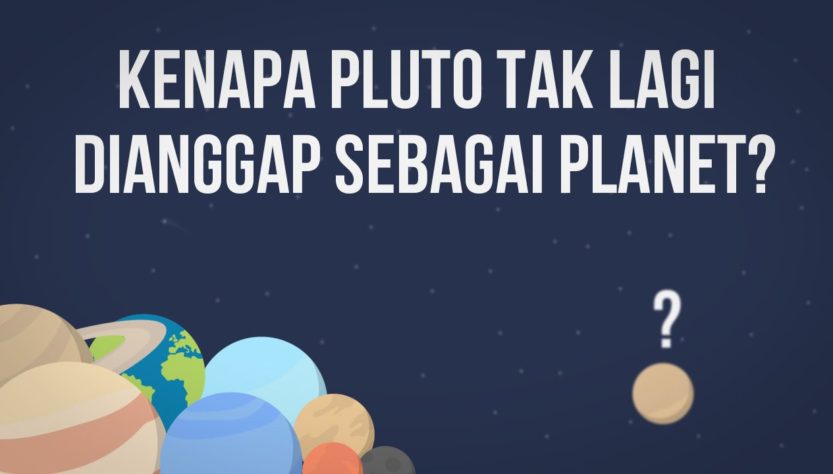Perhaps many of us used to remember that our solar system consisted of nine planets, and Pluto was one of them. But then Pluto was no longer considered a planet.
Why is that?
Pluto was discovered on February 18, 1930 by an astronomer named Clyde W. Tombaugh with contributions from William H. Pickering at Lowell Observatory in Flagstaff, Arizona, who thought that he had managed to find the 9th planet in our solar system, after Neptune.
For a planet in our solar system, its size is relatively small, because Pluto’s size is very small and lame when compared to other planets. indeed the size of Pluto is not too small, but if we learn about astronomy, we will know that the size of Pluto is not comparable to other normal planets.
In fact, Pluto is smaller than the Moon. Recorded in the Universe Today, Pluto’s diameter is only 2,390 km and it is the size of 70 percent of the Moon or 18 percent of the size of Earth.
The issue of the size of a celestial object has indeed become a scientific debate among academics.
However, if indeed the size and mass of a celestial object is too small, it should not be able to form a perfect orbit and it is impossible for its gravitational force to sweep away the surrounding objects. Remember that a planet’s gravity must dominate its orbital path. Apparently, Pluto’s small mass and size make Pluto an object with a “defective” orbit.
But astronomers at the time firmly believed that Pluto was indeed the 9th planet in our solar system.
Then the problem arose when more sophisticated telescopes were successfully developed at that time, from our observations we know that Pluto is just one of the many celestial objects in the area called the Kuiper Belt.
In this Kuiper Belt there are about 70,000 celestial objects such as Pluto, one of which is Eris which is larger than Pluto, which ultimately makes Pluto’s status as a planet questionable.
The number of celestial objects such as Pluto out there makes astronomers finally make conditions for a celestial object to be called a planet.
The first condition is that the object must orbit the sun.
The second requirement is that the object must be round as a sign that the object has strong enough gravity.
And the last condition is that the object must be an object with strong enough gravity, so that it can clear other objects from their orbits.
So, what is meant by not “cleaning” its orbital environment of other objects? Reporting from the Library of Congress, September 19, 2019, the criteria mean the planet must become gravitationally dominant so that there is no other object of comparable size, other than its own satellite or the object under its gravity, in the vicinity of its orbital space.
In this case, Pluto shares an orbital environment with Kuiper belt objects such as plutino. And it is this last condition that poor Pluto cannot fulfill.
But then to group planets like Pluto, astronomers created a special designation called Dwarf Planet or Dwarf Planet.
So we have to thank Pluto, because of the fact that prior to the Pluto case in 2006 we didn’t have any specific requirements for a celestial object to be called a planet.
And it’s possible that if it weren’t for Pluto, any spherical object floating in space we could call a planet.
The need for digital IT is needed in daily activities, Bead IT Consultant is the right choice as your partner, visit our website by clicking this link: www.beadgroup.com

